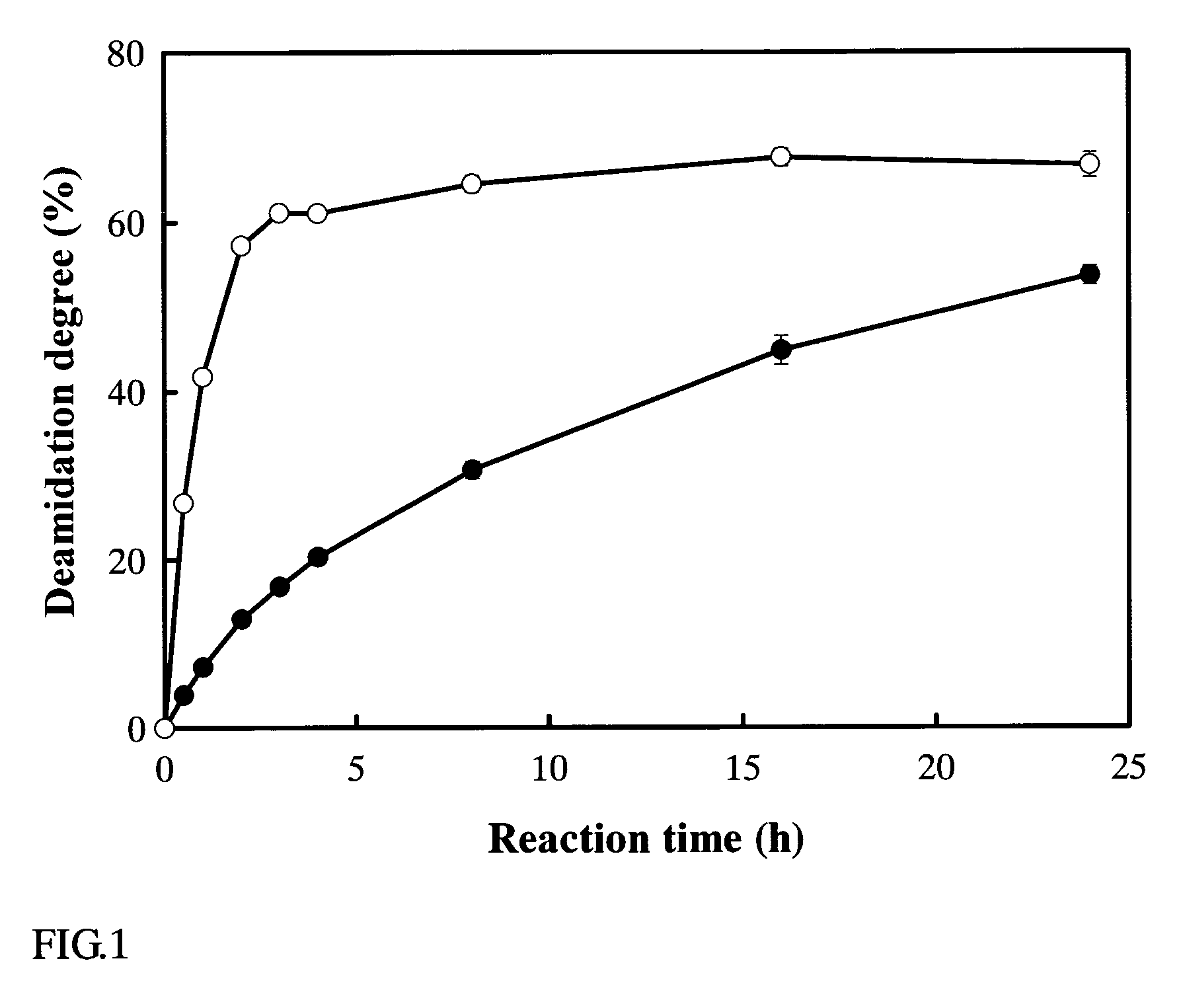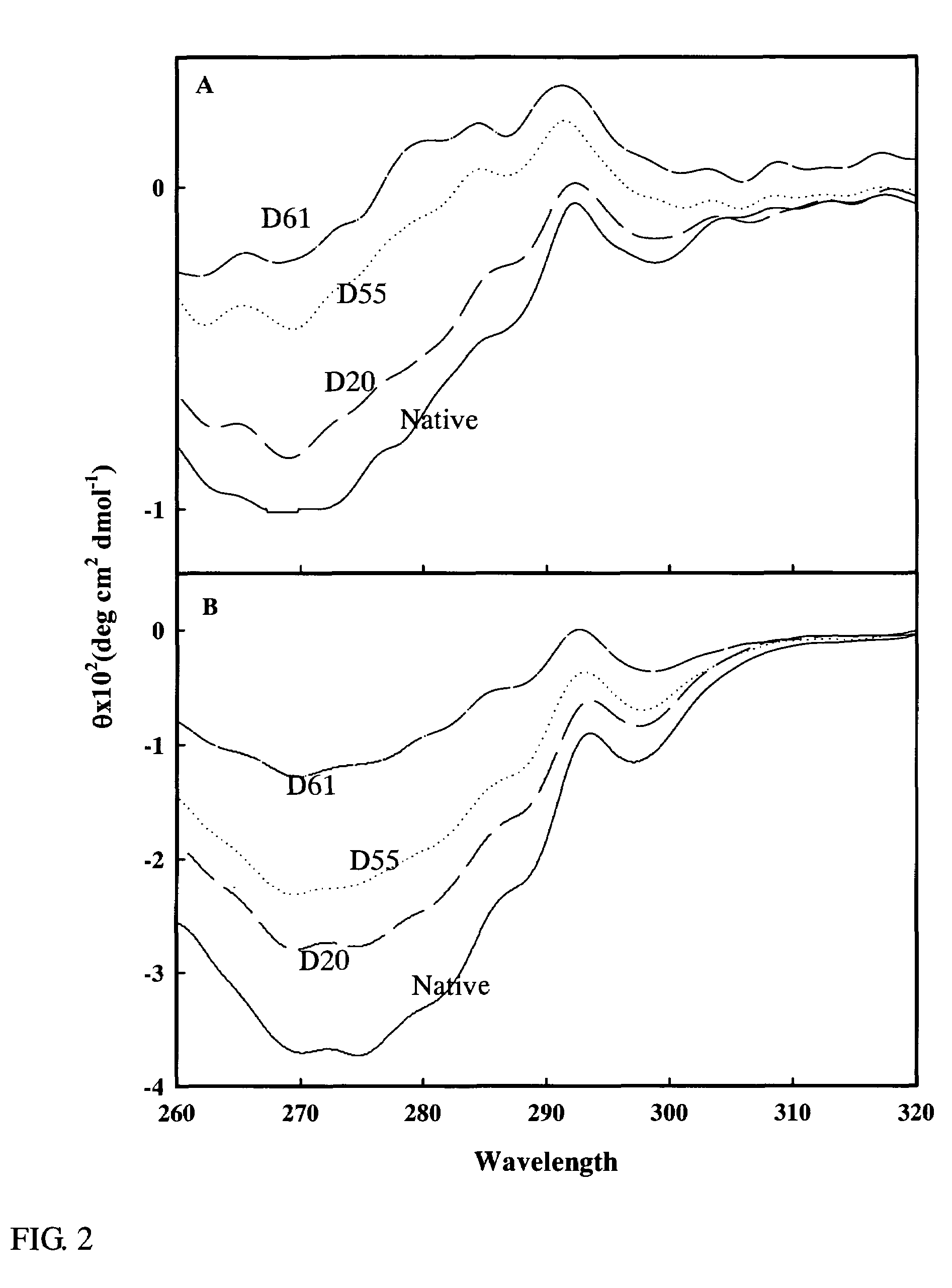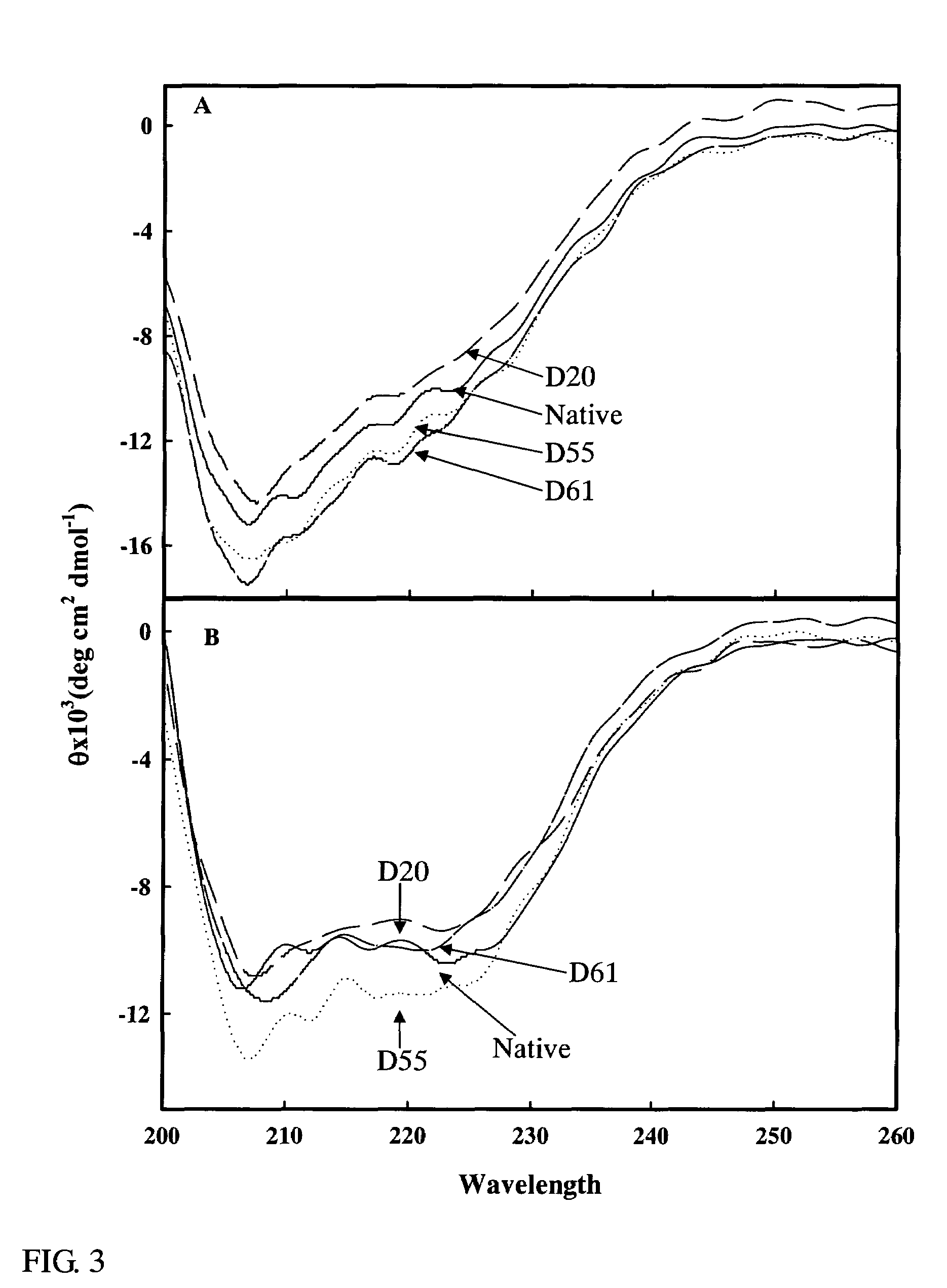Method of deamidation of milk protein and method of denaturation of milk protein
a technology of milk protein and denaturation method, which is applied in the field of milk protein denaturation method and milk protein deamidation method, can solve the problems of not being able to find a suitable enzymatic denaturation method, and achieve the effects of reducing the isoelectric point of the enzyme protein, modifying the ph stability, and modifying the enzymo-chemical or physicochemical characteristics
- Summary
- Abstract
- Description
- Claims
- Application Information
AI Technical Summary
Benefits of technology
Problems solved by technology
Method used
Image
Examples
example 1
Preparation of Protein Deamidating Enzyme
[0062]Chryseobacterium sp. No. 9670 (FERM-7351 as an accession number by National Institute of Bioscience and Human-Technology of Agency of Industrial Science and Technology of Ministry of International Trade and Industry) was cultured in an LB Base medium at 25° C. to obtain a 40-hour culture medium, which was made free from cells by centrifugation at 4° C. and 12000 rpm (222000×g) for 20 minutes to obtain a supernatant, which was passed through an ultrafiltration membrane to effect a 25-fold concentrating, followed by lyophilization to obtain a crude enzyme powder. This was dissolved in a 10 mM sodium phosphate buffer (pH 6.5) containing 2.0 M NaCl, made free of insolubles by centrifugation at 4° C. and 10000 rpm (12300×g) for 15 minutes to obtain a supernatant, which was subjected to a phenyl sepharose CL-6B column (Pharmacia) equilibrated with a 10 mM sodium phosphate buffer (pH 6.5) containing 2.0 M NaCl to elute the adsorbed protein wit...
example 2
Treatment of Denatured α-lactoalbumin with Protein Deamidating Enzyme
[0070]α-Lactoalbumin (Sigma) was dissolved at 10 mg / ml in a 20 mM Tris-HCl buffer (pH 7.0), to which the protein deamidating enzyme obtained in Example 1 was added at 1.82 μg / ml and shaken at 42° C. For the purpose of denaturing the α-lactoalbumin, a 5 mM ethylenediamine tetraacetic acid was added as a denaturing agent (chelating agent) (Matsumara et al., Food Hydrocol., Vol.8, 555–566, 1994) whereby effecting a deamidation reaction. The time course of the reaction was as shown in FIG. 1. In this figure, the degree of deamidation (%) represents the ratio of the glutamine residue which has been deamidated based on the total glutamine residue in the protein. The total glutamine residue number was obtained on the basis of the total amino acid sequence of the α-lactoalbumin (Brew et al., J. Biol. Chem., Vol. 245, 4570–4582, 1970), and the deamidated glutamine residue number was obtained from the quantity of ammonia lib...
example 3
Change in Higher Structure of α-lactoalbumin Treated with Protein Deamidating Enzyme
[0072]The change in the higher structures of the deaminized α-lactoalbumins obtained in Example 2 which had various degrees of deamidation (D20: 20% deamidation degree, D55: 55% deamidation degree, D61: 61% deamidation degree) were examined by a near UV CD (circular dichroism), and the results obtained are shown in FIG. 2. The analysis was conducted in a 20 mM Tris-HCl buffer (pH 7.0) containing 2 mM ethylenediamine tetraacetic acid (FIG. 2A) or 2 mM CaCl2 (FIG. 2B). As a control, a non-deamidated α-lactoalbumin (Native) was employed. As a result, the spectrum intensity of the deamidated α-lactoalbumin at around 270 nm was reduced in any of the solution. The degree of this reduction was increased when the degree of deamidation was increased. These findings suggest that the deamidation allowed the aromatic group on the side chain of the α-lactoalbumin to be remote, i.e., served to deteriorate the tert...
PUM
| Property | Measurement | Unit |
|---|---|---|
| pH | aaaaa | aaaaa |
| temperature | aaaaa | aaaaa |
| temperature | aaaaa | aaaaa |
Abstract
Description
Claims
Application Information
 Login to View More
Login to View More - R&D
- Intellectual Property
- Life Sciences
- Materials
- Tech Scout
- Unparalleled Data Quality
- Higher Quality Content
- 60% Fewer Hallucinations
Browse by: Latest US Patents, China's latest patents, Technical Efficacy Thesaurus, Application Domain, Technology Topic, Popular Technical Reports.
© 2025 PatSnap. All rights reserved.Legal|Privacy policy|Modern Slavery Act Transparency Statement|Sitemap|About US| Contact US: help@patsnap.com



